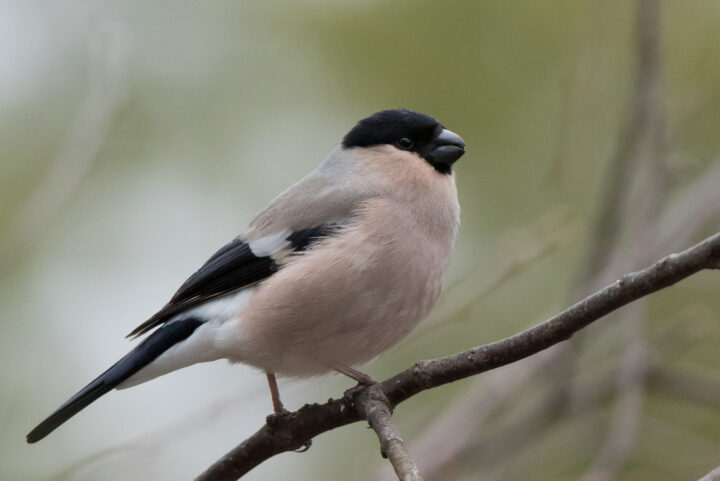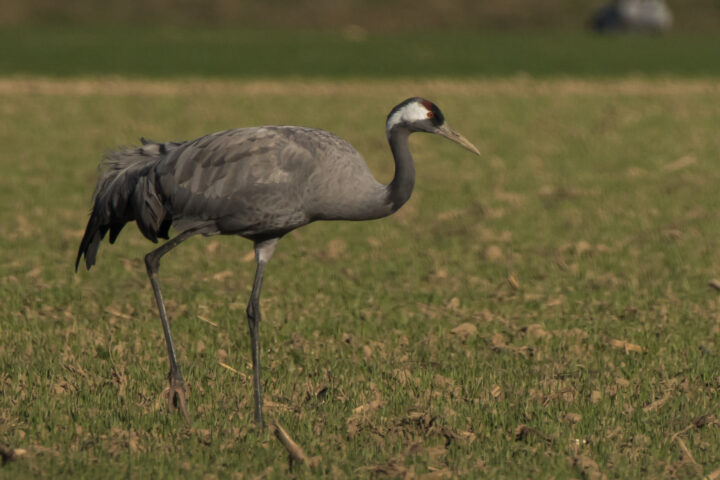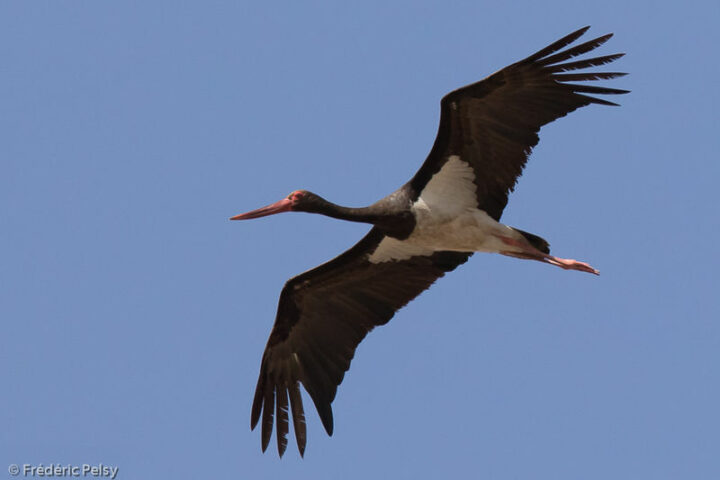EUROPEAN ROBIN
Erithacus rubecula
CLASSIFICATION
- Order : Passeriformes
- Family : Muscicapidae
- Genus : Erithacus
- Species : Rubecula
BINOMIAL NAME
- Linnaeus, 1758
BIOMETRICS
- Size: 14 cm
- Wingspan : 20 to 22 cm
- Weight : 16 to 22 g
LONGEVITY
15 years
DISTRIBUTION

VOCALISATION
The vocal emissions of the robin are typical. The most frequent call is a metallic “tic” of excitement, often repeated in staccato and expressing a form of anxiety. In the very excited bird, it can be emitted at a very fast rhythm. It is the call used by adults near the nest in case of danger for example. Another classic call consists of a short, high-pitched, penetrating “tsiih” that can be considered a contact call. The song is very characteristic. It is a sequence of whistled and rolled notes, of high pitch, like a soft and liquid babble, which seems to flow naturally along a continuous phrase. This species has the particularity to know a resumption of the song in autumn, song which will be used by the males in winter to defend a food territory. This song is considered softer than the spring song.
IUCN CONSERVATION STATUS

Partager
IDENTIFICATION
The House Robin is a small, plump bird with relatively short wings that barely reach the middle of the tail. The adult is easily recognizable by the orange color that covers the entire front of the body, forehead, lores, sides of the head, neck and breast. This large orange area is bordered by a light gray band that is not very visible on the top of the forehead and on the sides of the neck and chest. The rest of the underside is dirty white washed with russet on the flanks. The upper parts are of a brown shaded with olive, rather dark. The rump and the supra-caudals are of a slightly warmer brown. The remiges are hemmed with buff, which lightens a little the closed wing on which stand out the darker primary coverts. The eye is dark. The thin, short and straight bill is dark brown, with the base a little lighter. The legs are reddish or brownish according to the light, sometimes pinkish.
The juvenile has a silhouette similar to that of the adult, but a very different appearance. The orange color is absent. The whole body is brown, largely speckled with russet buff as it is the rule in the muscicapids. The future orange plastron nevertheless already shows because at this level the feathers are more reddish than elsewhere. Nevertheless, it will be necessary to wait for the postjuvenile moult to see the first orange feathers appear. On the closed wing a reddish bar formed by the points of the large covers thus coloured is clearly distinguished. This character will persist after the first moult and will allow the following year to know that we are dealing with a second year bird. Otherwise, the first weeks, the yellow mouth commissure is well visible.
HABITAT
The House Robin is primarily a forest bird, whether deciduous, evergreen or mixed, which is the optimal environment it frequents on its breeding grounds. But from there, it spills over into other favorable wooded environments such as riparian forests of streams, parks, hedgerows, etc.. In the bad season, it leaves the forest, especially the northern birds that are migratory, to gain more anthropized environments such as gardens in the countryside, but also in the city, the margins of agricultural areas provided with woody, scrubland and scrub in Mediterranean biome, etc. We can almost say that it can be everywhere where there are woody plants in the wintering area.
THREATS – protection
The House Robin is widespread throughout most of its range and not threatened. However, it is well known that in the southern Mediterranean, like many other migratory bird species, the species is heavily harvested by local people for culinary purposes, using nets or other means.
La Gallerie








Find all the walls
15 walls
Place
14-16 Penpoll Road,London
Fresque
Hummingbird by Claire Ward ThorntonPar
Claire Ward-ThorntonOiseau
Ruby-throated HummingbirdPlace
Aknīste – Gārsene – Ausmas,LV-5218 Gārsene,
Lettonie Zemgale
Fresque
Black storksPar
Anda LāceOiseau
Black StorkPlace
Bruxelles BelgiqueFresque
Turtle DovePar
Aurore VegasOiseau
European Turtle DovePlace
Jarrestraße 20,22303 Hamburg,
Allemagne
Fresque
COMMON KESTRELPar
Hanadi ChawafOiseau
Common KestrelPlace
Lisbonne,Portugal
Fresque
Vulture & EaglePar
Tatiana SaumOiseaux
Spanish Imperial Eagle, Cinereous Vulture.Place
Kišpatićeva ul. 12,10000,
Zagreb,
Croatie
Fresque
Common KingfisherPar
Chez 186Oiseau
Common KingfisherPlace
1 Boulevard de Dresde,67000 Strasbourg,
France Grand Est
Fresque
Eurasian CurlewPar
Philippe BaudelocqueOiseau
Eurasian CurlewPlace
Tabor,1000 Ljubljana,
Slovénie
Fresque
Little TernPar
ŠkartOiseau
Little TernPlace
Roodborststraat 18,3083 WB Rotterdam,
Pays-Bas
Fresque
The European RobinPar
Marloes de KiewitOiseau
European RobinPlace
35 Rue du Général Leclerc92130 Issy-les-MoulineauxFresque
Five birds by MantraPar
MantraOiseaux
Common Kingfisher, Barn Swallow, European Goldfinch, Eurasian bullfinch, Lesser Spotted Woodpecker.Place
Place Seigneur de Monlezun,Sempesserre
Fresque
The Red PartridgePar
Adèle RenaultOiseau
Red-legged PartridgePlace
Ss Cyril & Methodius 44,Skopje 1000,
Macédoine du Nord
Fresque
Egyptian VulturePar
Dorotej NeshovskiOiseau
Egyptian VulturePlace
2 Place des Marseillaises,Marseille
Fresque
6 Mediterranean and American birdsPar
FikosOiseaux
Eurasian Hoopoe, Western Black-eared Wheatear, Blue Rock Thrush.Place
299 Avenue de l’Adour,Anglet
Fresque
11 migratory birds of the Basque coastPar
MioSHeOiseau
Common cranePlace
84 Rue du Chemin Vert,Boulogne-sur-Mer





















